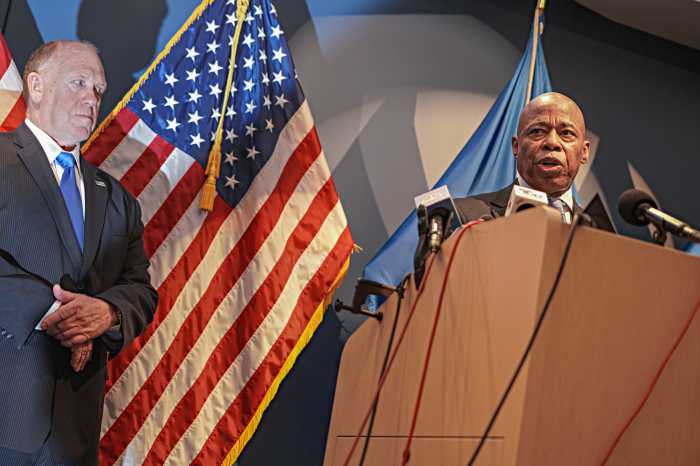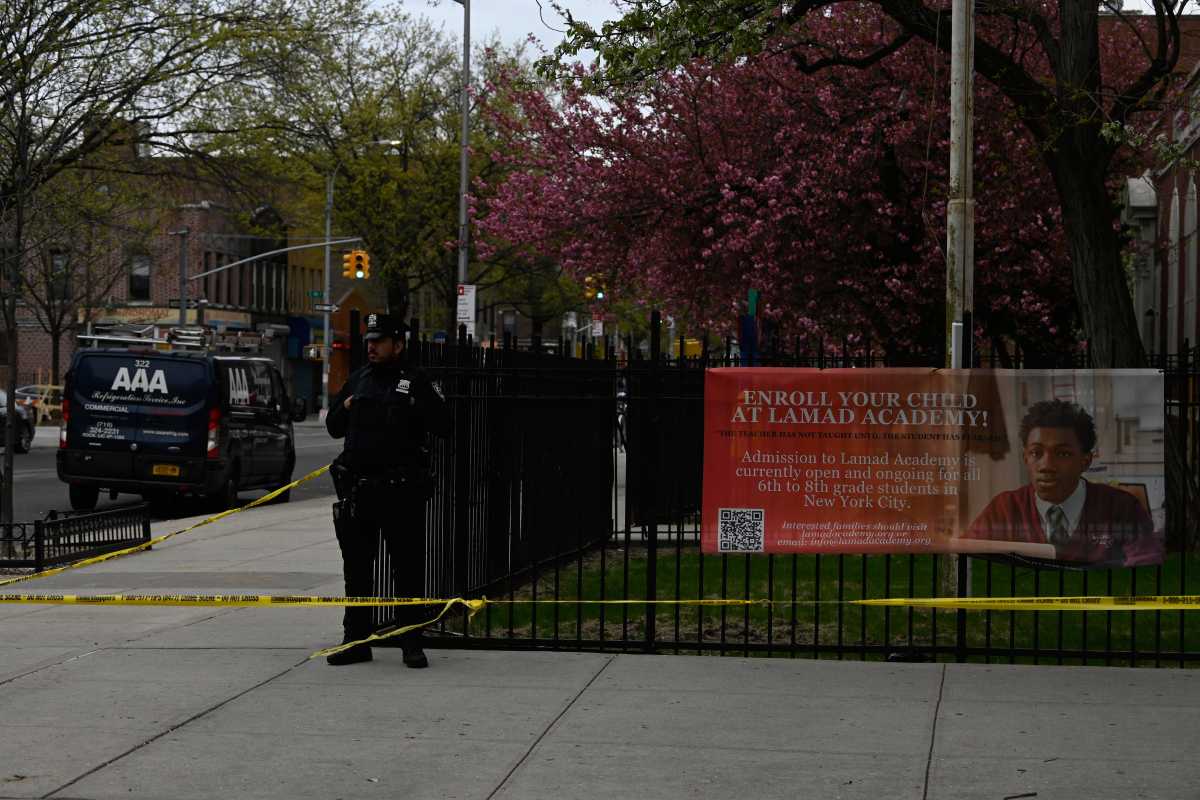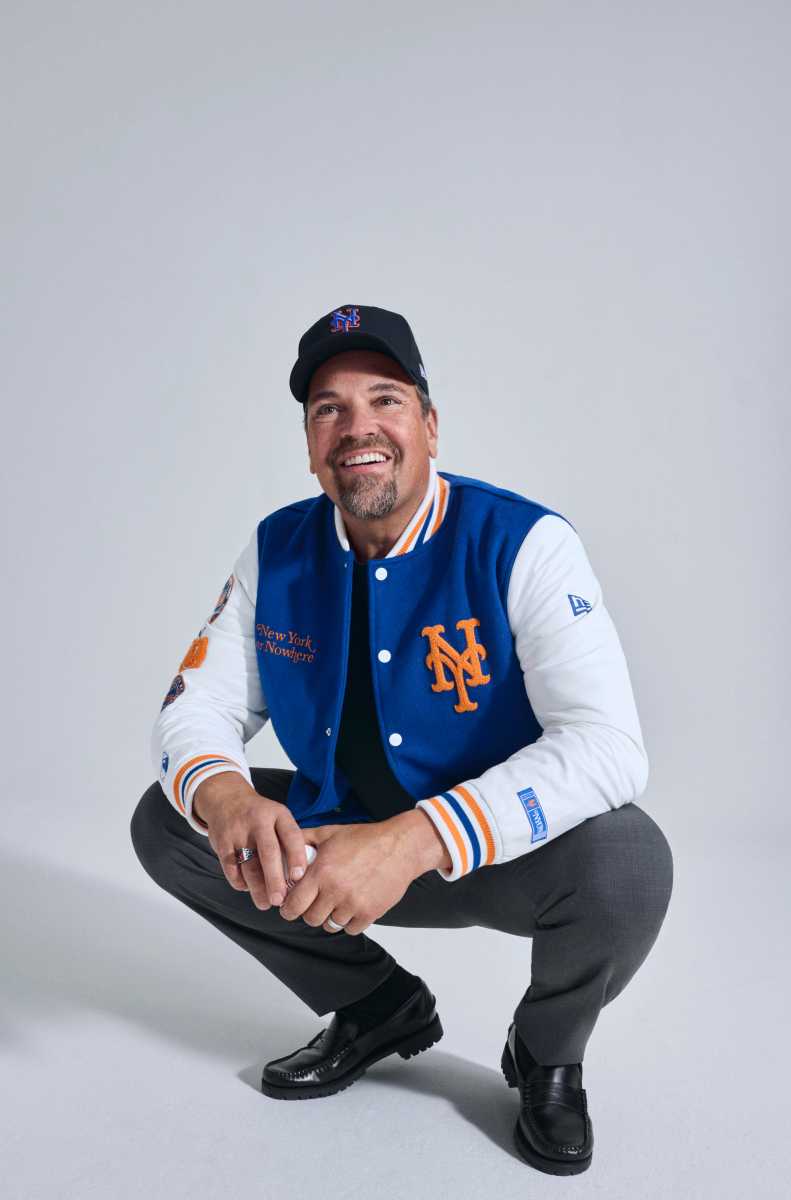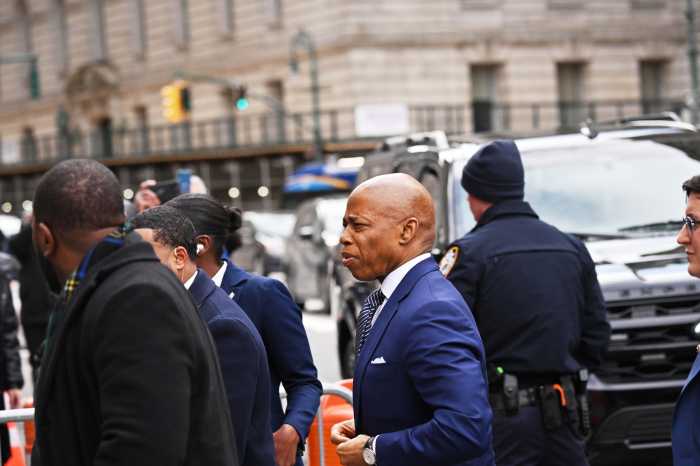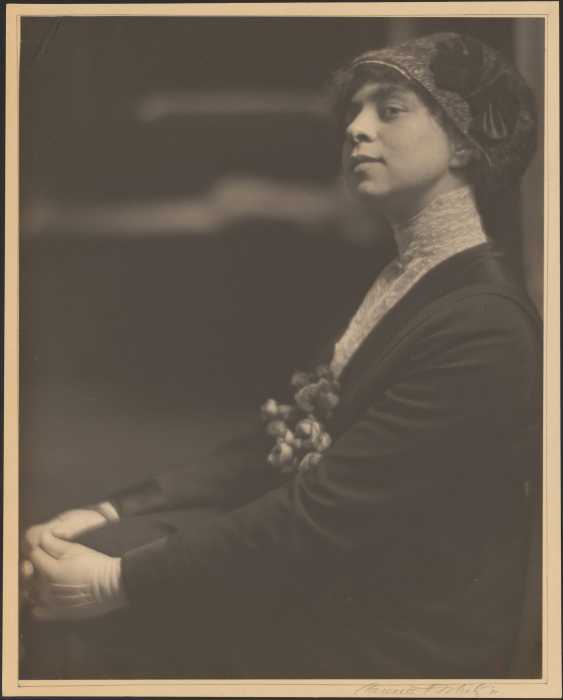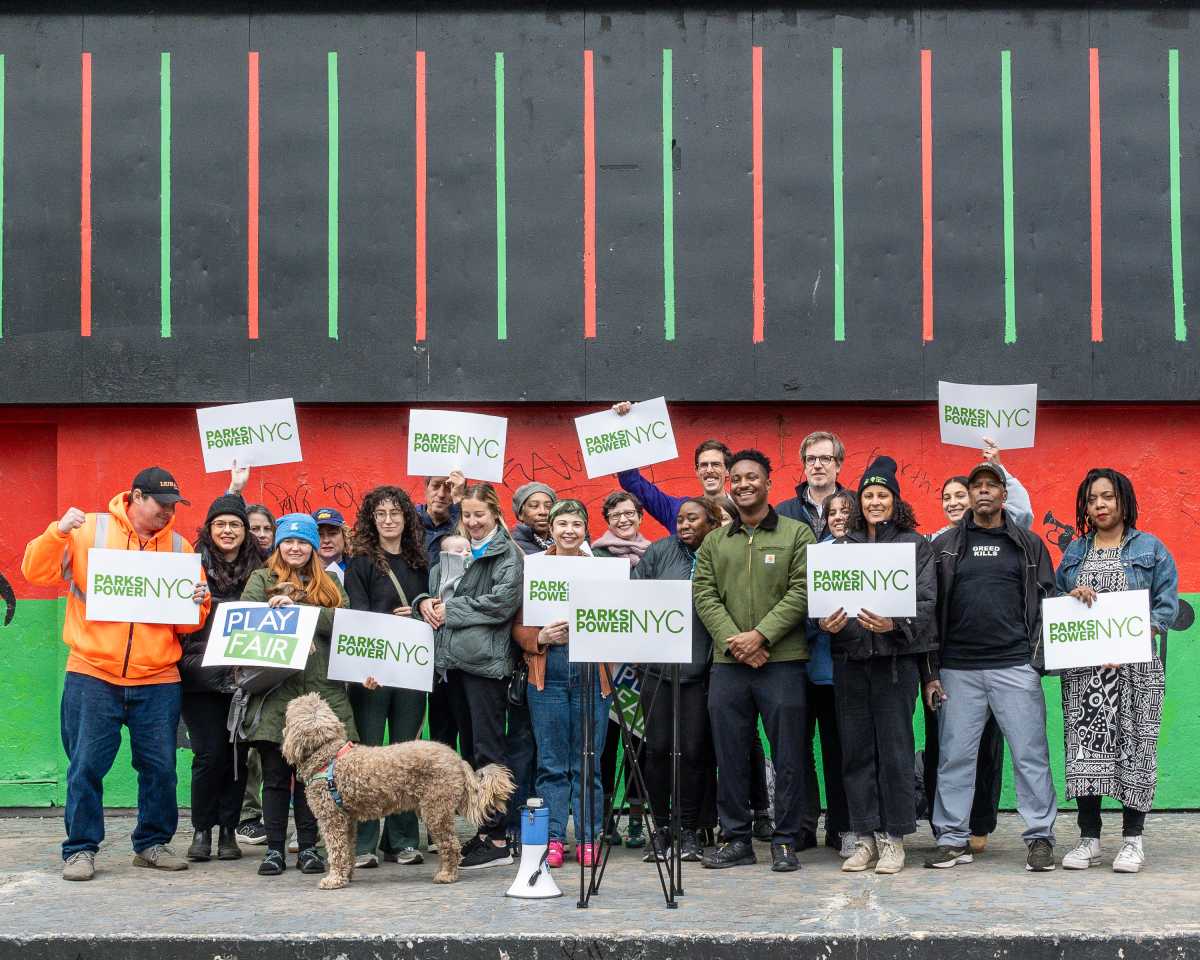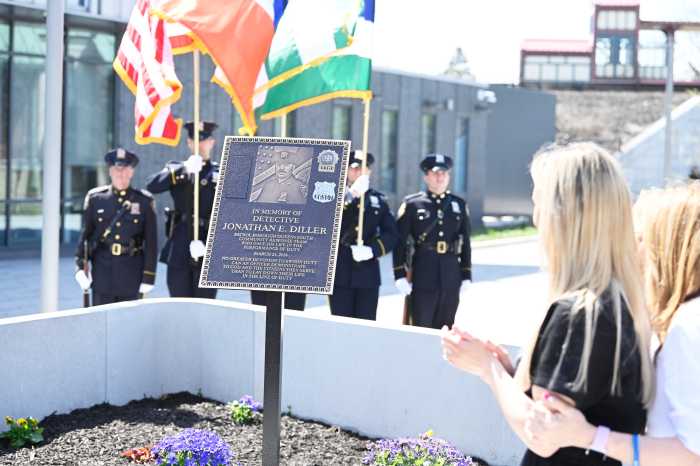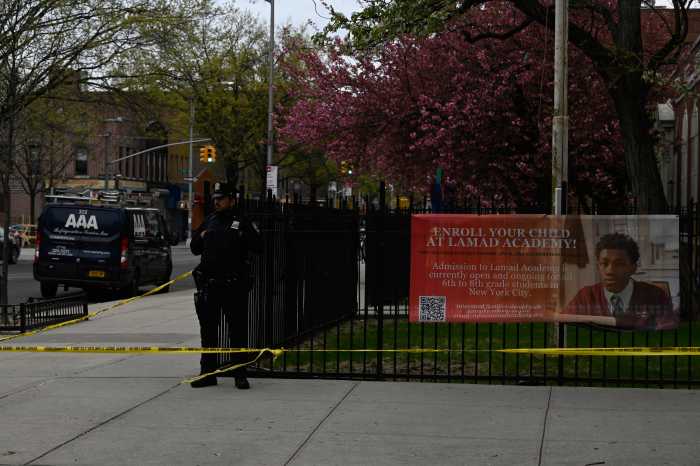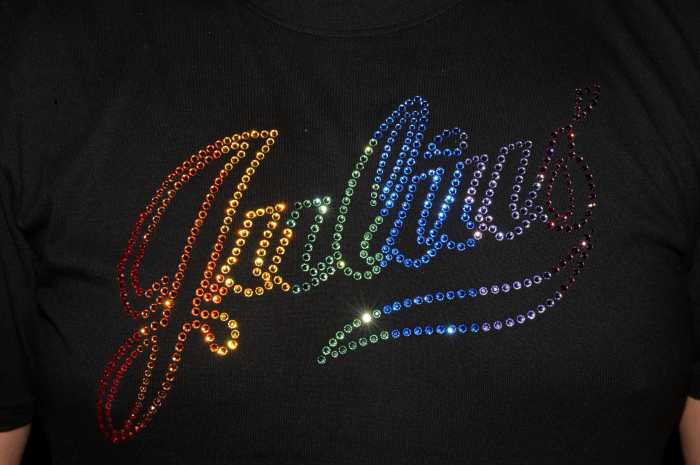
A 14-ton Nazi-era “cattle car” — like those used to ferry humans to the Holocaust death camps but also a wood and steel reminder of genocide — descended from a crane onto a Battery Park City sidewalk Sunday and back into the lives of Manhattanites Ray Kaner and her husband Leon.
The couple, both 92 and survivors of the Nazi death camps, were on hand Sunday when the German freight car went on display at the doorstep of the Museum of Jewish Heritage as part of an upcoming exhibit, “Auschwitz: Not Long Ago. Not Far Away.”
Ray Kaner looked at the boxcar as it rested on rails outside the museum, and horrible memories came to the surface.
“These cattle cars are where the mass killings started,’’ said Kaner, who described her life mission as recording the stories of other Jews who survived the Holocaust. She also shares stories of her childhood spent in a Polish ghetto before a box car like the one in Battery Park transported her to Auschwitz. Kaner said she was a teenager before being liberated from the Bergen-Belsen concentration camp in Germany.
Inside the freight cars, Kaner said, 80 people stood or sat in cramped conditions.
“There were no windows, only separations between the wooden beams,” Kaner said, her husband by her side. “It was August. The heat, the smell. It was terrible. …You could not lay down. Inside there were only urination pails.”
The couple married after being liberated and immigrated to New York City in 1946.
Ray Kaner said the German soldiers told her and the other prisoners the “cattle cars would transport us out of the ghetto to a better place. It was all lies.’’
The Nazis convinced mothers to give up their children with promises they would be reunited, she said.
“Then they saw their little children thrown into trucks,” Kaner said. “They realized then that they were going to be killed.”
Scandinavian Roman Catholic nuns saved Kaner and nursed her starving body back to health with biscuits and tea.
“I’ve heard these stories my whole life,’’ said Kaner’s son Charles. “Genocide continues. It gives me nightmares that it happened in Bosnia, Rwanda, Albania, the Turks in Greece.’’
The exhibition is scheduled to open in May and includes 700 artifacts collected from Auschwitz and never before displayed in the United States. The artifacts represent all victims of the Holocaust, from Poles and Romas to Jehovah’s Witnsesses and includes the desk of a camp commandant, said Luis Ferreiro, director of Musealia, a Spanish museum exhibition company, that displayed the artifacts in Madrid. The exhibit will also include children’s books read to German youth to perpetrate hate against Jews, he said.
Battery Park City resident Tina Yackler said she and her husband were taken aback when they saw the German freight car.
“We were hit with a magnitude of history,” Yackler said. “I imagined families inside fearful of the unknown. How did they survive?’’
The decision to place the boxcar on a sidewalk outside the museum was not an easy one, said Jack Kliger, museum president and chief executive officer.
“We knew it would be difficult for people to see,” Kliger said. “But it is better for people to ask questions and talk about what happened.”



